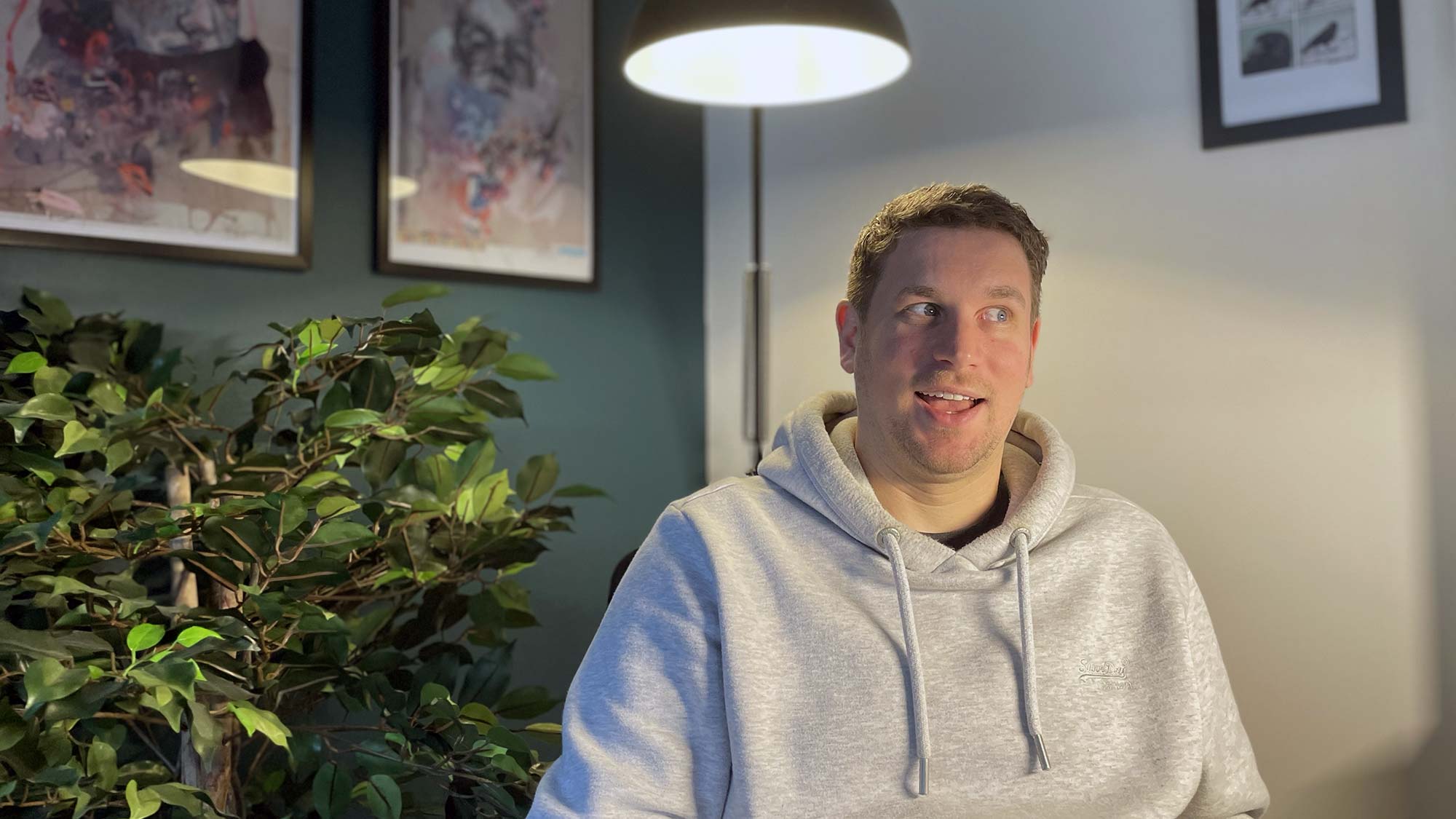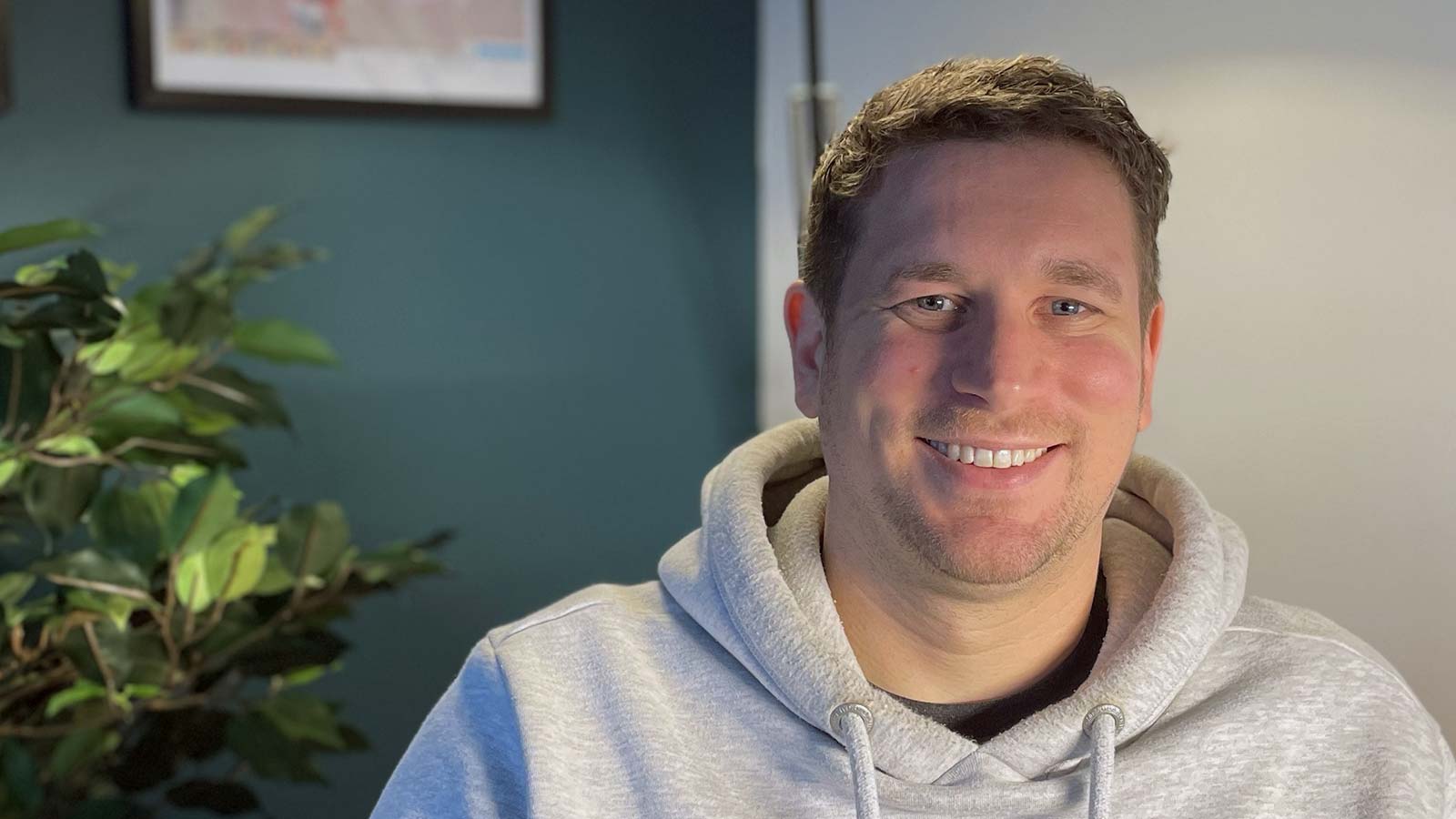This website uses cookies so that we can provide you with the best user experience possible. Cookie information is stored in your browser and performs functions such as recognising you when you return to our website and helping our team to understand which sections of the website you find most interesting and useful.
A day in the life of our creative director
Estimated reading time: 7 minutes, 20 seconds

Do what you love. That’s what they say.
Easier said than done for many, and if you decide to avoid the wild and loose life of a freelancer or contractor that sentiment often gets even harder.
Turns out the man “big business” wants you to do what they want, and when it comes to alignment with authority, that’s not always what you had in mind.
Somehow that all makes me feel very lucky. I get up in the morning, and despite having a team who will dish out work for me quite happily, ultimately I get to do what I love.
To say that’s “design” is like a chef saying “I do kitchen stuff” so to be specific, I love working on digital design. User-orientated effective communication of information. A little creative work, a little UX, strategy, some branding, some design-based consultancy and even a bit of front-end development.
The Work
I’ve been a designer for some 18 years now, so there is very little I’ve not been fortunate enough to design when it comes to graphics, websites, web-apps and software. That’s not to say design comes without any challenge. There’s always a problem to solve, a limitation to work with or a deadline to hurtle towards. What I didn’t expect though, after years in a design agency, a marketing agency and a stint working freelance, is that there are still a delightful variety of jobs to be done when you work product-side*.
So when I run you through my day I’ll probably stay light on the specifics of work being done. Not because I’m trying to cover up for an absence of effort, but because the nature of being a solo designer in a rapidly expanding organisation means my week could be filled with any number of things.
Brainnwave’s Decision Intelligence platform Mosaic, where we merge and enhance data sources, run algorithms and provide a way to dig into our data science findings is one of the ever-present, evolving pieces of design work.
Our own external facing website and all the accoutrements that come with it is another of those jobs that never really stops, it just grows, shifts and provides new challenges.
We also have a site for our platform documentation, I hope to build a design-orientated subdomain for our future design system (the creation of which is also in-progress), and there are one or two smaller single-page sites for things like email signature generation and other internal requirements.
As well as those chunks of web-based work (which can involve both design and development for me) there are marketing and sales materials.
Our sales team and C-suite often work with presentations, so maintaining a master presentation template or managing the delivery of that sort of material alongside any other sales assets and document designs is a big branch of the brand identity.
The marketing team also uses assets such as whitepapers, ebooks or visual-led downloads as well as diagrams and various bits of imagery for everything from major launch documentation or shareable resources to social media post imagery. All of these things need varying levels of creation and design input.
Throw in some video editing, some graphic creation, some animation, some conceptualisation and a peppering of photo editing, and you’re almost there.
The Morning
We’re largely remote at Brainnwave, although we have a couple of offices I could work from if the spirit (or train) took me.
Remote working means I can wake at 8:30am, and be showered, dressed and at my desk with a coffee in hand by 9am for a 30 minute scroll through feeds, to-do list management, emails and social media.
Most of the team have a 9:30am stand-up meeting, which I join on Mondays and by 10am we’re usually into the biggest working chunk of the day.
Between 10am and around 3pm I’ll get the most work done and find time for a floating lunch hour which can be a number of things. A quick lunch and a local walk, or a lunch at my desk and just straight back into it so as not to lose my train of thought.
The Afternoon
After lunch, assuming I’ve not over-stuffed myself on carbs there’s another chunk of work till around 3-4pm where things will start being rounded out.
Then we hit the time where I avoid starting any new major jobs unless it’s something I know I can get done, and I’ll spend time figuring out tomorrow’s workload, any admin, ticket sorting tracking time or anything else needing to be dealt with.
Between 5pm and 5:30pm I’ll sign off, close Slack, close my email and step away from my work and the evenings are mine to do with what I wish.
Flexibility
The benefits of remote working are supplemented by the benefits of working for Brainnwave specifically. Nobody is clock-watching so taking an extra minute of lunch isn’t going to be written up in a referral. If you want to work into the evening to get something delivered, that’s absolutely fine (but discouraged). We implemented a “no communication outside of work hours” rule, unless something is on fire or very important, to safeguard people’s family or personal time. I’m also big on making a distinct difference between “free time” and “availability”.
We also try to safeguard Wednesdays for our “Working Wednesdays” initiative which discourages all but absolutely essential meetings for hump-day, so we all get at least one meeting-free day a week minimum.
As much as I like the prescriptive regiment of a work routine, there’s always flex for days when you’re struggling, or conversely, days when you have the work ethic of a Bowerbird**. The London office also provides a welcome break from the norm and some pretty enjoyable whiteboard sessions (certainly when it comes to the design, sales and marketing team deathmatches get-togethers).
A healthy mind is key to doing good work, so if you need a break, or need to book a few days off, then we have no cap on holidays. Obviously the system is not there to be taken advantage of and there’s always an element of trust involved – but the reality of that is you can take the holidays you need, enjoy time when you feel you want it and still get to the end of the year without realising you’re going to have to work Christmas Eve, Boxing Day and New Year because you took that long weekend back in July!
The Corny Conclusion
Does it help that all of my colleagues are sickeningly wonderful and that we all get along like an office on fire? Yes. Does it help that we have a C-suite management team with a genuine desire to do the right thing for both the company AND the staff, not just the former? Also yes.
I feel compelled to say Brainnwave isn’t without its flaws and I’m sure even the most astute observer might eventually find some crumbs of discontent. The problem is I only feel compelled to say this because I worry I’ve missed something. I imagine you reading this saying “I mean, how good can it be?” and to that I’d say it’s the best job I’ve had in my career.
OK I’m worried this is all turning into a Brainnwave love letter.
I will say this. The inherent flexibility at the company means that even if it is the best job, when the work hits a low, or when I’m waiting for that next chunk of exciting work to land on my plate, I can end my day safe in the knowledge that as I close that laptop, I don’t need to stress about my work, what I’ve done, what I have yet do to or where it’s all going. I’m doing what I enjoy, and I know me and my work are valued at Brainnwave, and were you to join us, you and yours would be too.
Feel free to check out life at Brainnwave or have a look at the roles we’re currently hiring for here. (We’ve just posted a junior design role too, so you can come and help me with all those things mentioned above!)
==
*Product side refers to working for a company who has a product or suite of products – often software or web-apps, as opposed to an agency that works with multiple clients and organisations on lots of different jobs.
** Bowerbirds are incredibly hard-working. The male of the species will spend a great deal of time building a structure decorated with sticks and brightly coloured objects in an attempt to attract a mate.

